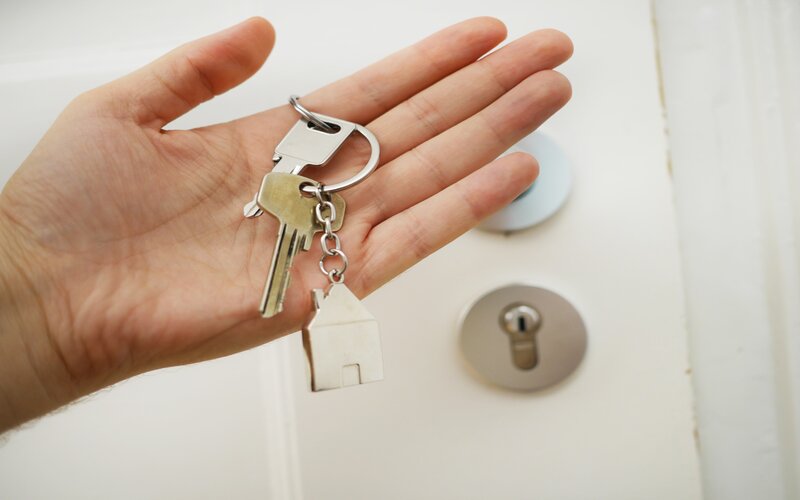It can be difficult to choose between fixed and variable rate home loans. As with any decision made under uncertainty, there's always a degree of fortune/misfortune involved.
Imagine you were a borrower in mid 2008. The cash rate has held steady at 7.25% for several months, with RBA guidance leaving room for further rate hikes. At the time, fixing would not have seemed like a wild decision, but as we now know, by April the following year the RBA cut by 425 basis points in response to the global financial crisis. Fixing would have meant locking in a rate well above variable rates, which were slashed with the cash rate.
It isn't a pure gamble though. Savvy borrowers like our case studies below arm themselves with as much information as possible to give themselves the best chance of making the right call on whether, or when, to fix their home loan rate.
Read more: Is it time to fix your home loan?
Picking when to fix
If there's a 'right time' to fix, it's when the rate on offer is as low as possible, and you think it's likely to increase soon. As you can see from the graph below, variable rates on home loans tend to move in line with the RBA cash rate. On the other hand, fixed rates tend to be set by lenders based on anticipated future cash rate movements, particularly increases.
You'll notice on the graph that fixed rates started to rise in 2021, several months before the RBA started raising the cash rate. While for you the borrower, locking in a fixed rate just before variable rates start climbing is ideal, this is not what lenders want.
When rates appeared on the way down from 2019 to early 2021, variable rates were above fixed rates. Borrowers choose between locking in a somewhat lower rate or gambling that variable rates would drop lower. When rates started heading up, this inverted. From late 2021 to mid 2023, borrowers could choose to fix at a moderately higher rate, or risk having their variable rate increase by a greater amount.
From this graph, we can pinpoint the ideal time to have fixed. From December 2020 to April 2021, the average rate for three or more years fixed was 2.0% p.a.. Rates for fixed terms below three years also bottomed out at 2.0% p.a., from May to October 2021.
On a macro level, the timing of Australian borrowers wasn't too bad. The percentage of new home loans on fixed rates peaked throughout 2021, exceeding 35% in January and staying above that mark all year. The peak was July 2021, when more than 46% of new loans funded that month (including refinancing) were on fixed rates, which is around when rates bottomed out.
Since then, the uptake of fixed rate home loans has gone in the opposite direction to the RBA cash rate. The most recent numbers from April '24 suggest only 1.2% of Aussies chose to fix in that month.
How much did Aussies who fixed save?
According to the ABS, in April 2021 the average new home loan size was $538,936. So on the average home loan, fixing at 2.0% p.a. would mean consistent repayments of $1,992.01 each month assuming a 30-year home loan, as per Savings.com.au's mortgage repayment calculator. The borrower who fixed for five years would still be on this rate.
Conversely, anyone who was on a variable rate during this time could attest to how much these repayments have increased. If we imagine another borrower with the same sized home loan, who instead paid the average variable rate, it gives an idea of how much fixing was worth to borrower A.
|
Month |
Average variable interest rate (p.a.) |
Monthly repayment |
Difference to fixed rate of 2.0% p.a. |
|---|---|---|---|
|
Apr-2021 |
2.8% |
$2,214.46 |
$222.45 |
|
May-2021 |
2.8% |
$2,218.40 |
$226.39 |
|
Jun-2021 |
2.7% |
$2,189.93 |
$197.92 |
|
Jul-2021 |
2.7% |
$2,189.93 |
$197.92 |
|
Aug-2021 |
2.7% |
$2,189.93 |
$197.92 |
|
Sep-2021 |
2.7% |
$2,189.93 |
$197.92 |
|
Oct-2021 |
2.6% |
$2,161.94 |
$169.93 |
|
Nov-2021 |
2.6% |
$2,161.94 |
$169.93 |
|
Dec-2021 |
2.6% |
$2,161.94 |
$169.93 |
|
Jan-2022 |
2.5% |
$2,134.36 |
$142.35 |
|
Feb-2022 |
2.5% |
$2,134.36 |
$142.35 |
|
Mar-2022 |
2.5% |
$2,134.36 |
$142.35 |
|
Apr-2022 |
2.4% |
$2,107.19 |
$115.18 |
|
May-2022 |
2.6% |
$2,161.60 |
$169.59 |
|
Jun-2022 |
3.1% |
$2,300.77 |
$308.76 |
|
Jul-2022 |
3.5% |
$2,415.32 |
$423.31 |
|
Aug-2022 |
4.0% |
$2,562.39 |
$570.38 |
|
Sep-2022 |
4.4% |
$2,683.07 |
$691.06 |
|
Oct-2022 |
4.6% |
$2,744.33 |
$752.32 |
|
Nov-2022 |
4.8% |
$2,806.16 |
$814.15 |
|
Dec-2022 |
5.0% |
$2,868.54 |
$876.53 |
|
Jan-2023 |
5.0% |
$2,868.54 |
$876.53 |
|
Feb-2023 |
5.2% |
$2,931.31 |
$939.30 |
|
Mar-2023 |
5.4% |
$2,994.61 |
$1,002.60 |
|
Apr-2023 |
5.4% |
$2,994.61 |
$1,002.60 |
|
May-2023 |
5.7% |
$3,090.36 |
$1,098.35 |
|
Jun-2023 |
5.9% |
$3,154.84 |
$1,162.83 |
|
Jul-2023 |
6.0% |
$3,187.24 |
$1,195.23 |
|
Aug-2023 |
6.0% |
$3,187.24 |
$1,195.23 |
|
Sep-2023 |
6.0% |
$3,187.24 |
$1,195.23 |
|
Oct-2023 |
6.0% |
$3,187.24 |
$1,195.23 |
|
Nov-2023 |
6.2% |
$3,251.98 |
$1,259.97 |
|
Dec-2023 |
6.2% |
$3,251.98 |
$1,259.97 |
|
Jan-2024 |
6.3% |
$3,284.44 |
$1,292.43 |
|
Feb-2024 |
6.3% |
$3,284.44 |
$1,292.43 |
|
Mar-2024 |
6.3% |
$3,284.44 |
$1,292.43 |
|
Total saving |
$24,159.00 |
Of course, this is only an illustration using average rates. In reality, lenders tended to alter variable rates in tune with the RBA - if the cash rate rose by 25 bps, so did variable rates.
Some real life examples of savvy borrowers that fixed their home loan rate at the right time talked to Savings.com.au about their experiences, and how much fixing saved them.
Dr Diaswati Mardiasmo

Given she holds a doctorate in public policy, Dr Diaswati Mardiasmo is better placed than most to anticipate the movements of the RBA. In early 2021, her sense was that rates would likely be increased before too long.
"Back then, we had no idea what was to come during/after COVID - in terms of job security, if there is going to be anymore lockdowns, etc. That said, come March 2021, there was already some information circulating that some economies, in particular Queensland, was starting to open up to 'business as usual'," she told Savings.com.au.
"I knew that if the economy is starting to return to normal then maybe interest rates would also start to return to normal…the 0.1% cash rate [was] to help while everyone deals with COVID."
In April, she was paying around 4.6% p.a on her home loan (around $255,000 at the time) with Auswide Bank. She decided to fix at 2.09% p.a for three years, potentially saving tens of thousands of dollars like our hypothetical example. However, she decided she would not reduce her repayments.
"I have the habit of not changing my monthly transfers, regardless of the cash rate," she explained.
"Going to that fixed rate meant that my mortgage payment went down from about $1500 to $1200, but I was still continuously transferring $1700, the same amount since January 2014."
"I had built up a mortgage offset account all through the years [and] I built it up even more with the lower fixed rate."
For the whole three year fixed term, she was making an overpayment of about $500. Whenever you pay extra into your home loan, it is subtracted entirely from the principal amount you owe. This reduces the amount used to calculate interest, so can be hugely beneficial over the life time of a loan. Dr Mardiasmo potentially saved about $18,425 worth of interest, and reduced the loan term by almost seven years (estimated using the savings extra repayment calculator).
Penny Vandenhurk
When choosing between a fixed or variable interest rate, there's actually a non-binary option to consider. Many lenders allow borrowers to partially fix with a split rate, meaning a portion of your repayments are fixed while the remainder stays variable.
Ms Penny Vandenhurk, a Sydney buyers agent, decided to fix a portion of her owner-occupier home loan for her property in Sydney's inner west.
She fixed 30% of her owner-occupier loan (AMP First home loan) in February 2020 at 1.86% for four years, which recently expired. This saw the repayments on this 30% go from $1,349 to $2,874.
"I [fixed] because I didn't believe rates would go any lower," she told Savings.com.au.
"I actually paid $3,000 to break a fixed rate I had at the time to do this which in hindsight has saved me a lot more in interest."
In September 2021, she fixed a further 50% of the same loan, also at 1.86%. These repayments are currently at $1,824 per month. In September this year, this term will expire. At the time of writing, the current variable rate for owner-occupiers on the AMP First home loan is 6.13% p.a. (6.13% p.a. comparison rate*).
At the same time, Ms Vandenhurk was also paying off an investment home loan for a separate property in Sydney, which she fixed for three years, again at 1.86% p.a.
"My repayments [on the investment property] are currently $1,174 per month," she said.
At the time of writing, the AMP First variable rate for investors is 6.34% p.a. (6.34% p.a. comparison rate*), which is the rate this loan will revert to, although it is subject to change between now and then.
Across both home loans, Ms Vandenhurk has likely saved over $30,000.
Savings.com.au's two cents
For some people, there are additional benefits to fixing home loan rates. Guaranteeing the size of your mortgage repayments for a while can help with future planning and budgeting. This was the case for Ms Vandenhurk, who also chose to fix given she was starting her own business, so she valued the certainty of knowing exactly how much her forthcoming repayments would be.
For those who merely want to pay as little interest as possible, fixing your home loan can be a bit like making a bet about whether rates will go up or down. Sometimes, as in the above examples, you win this bet by fixing before interest rates rise. But at other times in the past, the lucky ones were those who stayed the course on variable rates.
To fix or not to fix? There is no right answer, but there is a wrong one, which is to not check out your options. Borrowers who simply 'set and forget' their rates for the whole mortgage term often lose tens of thousands of dollars. If you have an outstanding loan, you should be shopping around, seeing if you can refinance to a better rate elsewhere, as well as doing your research to work out whether fixed or variable rates are the right move for you.
Lender Home Loan Interest Rate Comparison Rate* Monthly Repayment Repayment type Rate Type Offset Redraw Ongoing Fees Upfront Fees Max LVR Lump Sum Repayment Extra Repayments Split Loan Option Tags Features Link Compare Promoted Product Disclosure
Promoted
Disclosure
Promoted
Disclosure
Promoted
Disclosure
Picture by Scott Graham on Unsplash

Ready, Set, Buy!
Learn everything you need to know about buying property – from choosing the right property and home loan, to the purchasing process, tips to save money and more!
With bonus Q&A sheet and Crossword!







 Bernadette Lunas
Bernadette Lunas
 Denise Raward
Denise Raward
 Harry O'Sullivan
Harry O'Sullivan

 Harrison Astbury
Harrison Astbury

